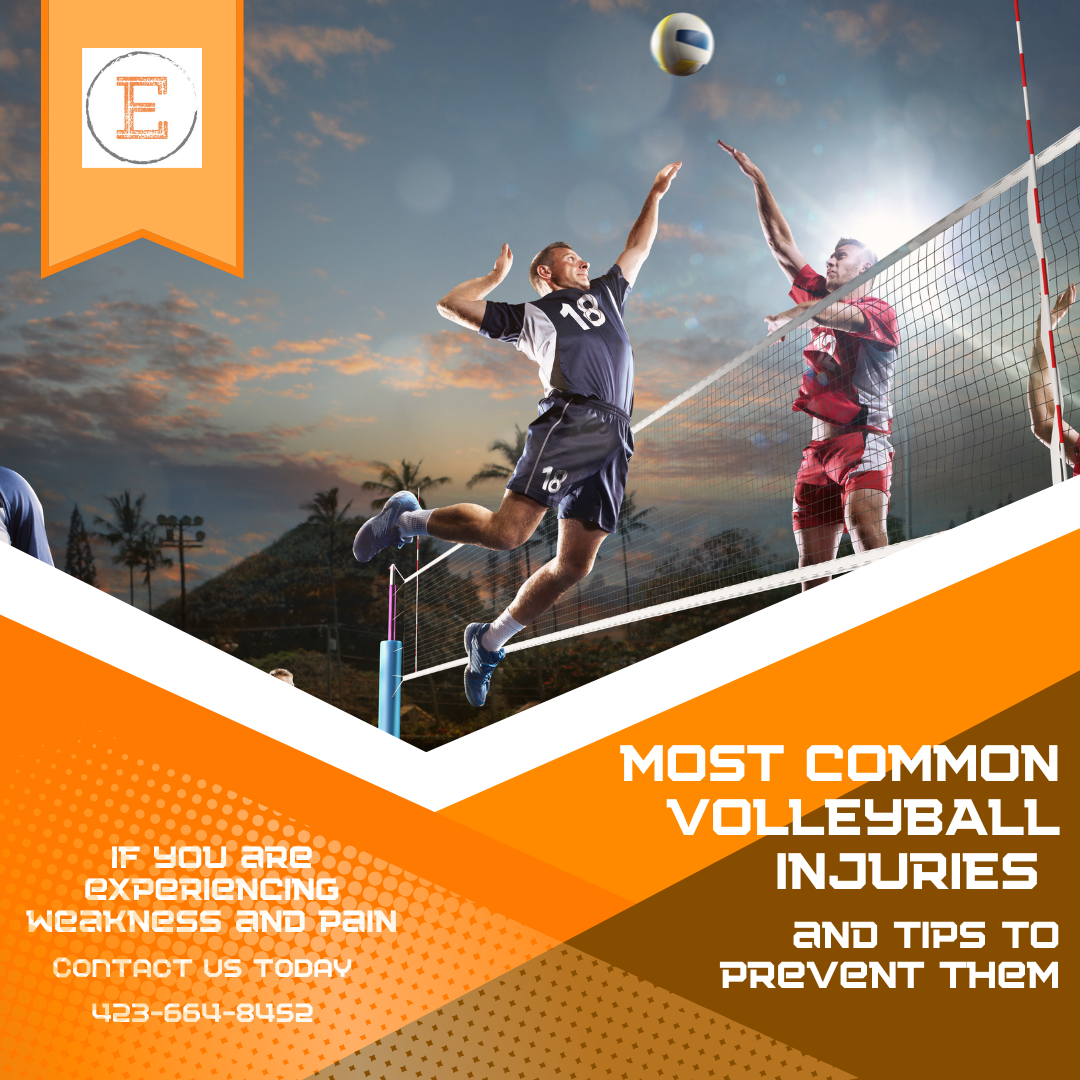Adversity, if you allow it to, will fortify you and make you the best you can be.” – Kerri Walsh Jennings
Most common volleyball injuries
1. Rotator Cuff Tendinitis
- The rotator cuff muscles are crucial for producing the force required to move the shoulder during serving and spiking.
- These muscles are rarely fully damaged in young players, overuse can cause irritation, fatigue, and strains.
- Pain relief is frequently provided by rest and physical therapy.
2. Finger Injuries
- Activities like blocking, setting, and digging in volleyball put fingers at risk for harm.
- Fractures, dislocations, and tears in ligaments and tendons are all frequent finger injuries.
- Depending on the injury, there might be a wide range of treatments.
3. Ankle Sprains
- The most frequent injury that causes volleyball players to miss the most playing time is an ankle injury. This can occur when a player falls awkwardly after jumping.
- Ankle sprains should be immobilized for the shortest amount of time possible. You want to regain the lost Range of Motion quickly.
- To reduce the risk of reinjury, every ankle sprain requires an 8-week course of daily rehabilitation exercises. In most cases, injuries can be addressed without surgery using bracing, physical therapy, or exercises done at home.
4. Patellar Tendinitis
- Inflammation of the tendon that links the kneecap to the tibia is known as patellar tendinitis (or shin bone). Any athlete who engages in repetitive, hard leaping actions like spiking and blocking is susceptible to patellar tendinitis.
- Patellar tendon straps, which are frequently the first course of treatment, are effective at relieving the patellar tendon of stress.
- Stretching and strengthening-focused physical therapy and athletic training programs are also beneficial. In rehabilitation, paying close attention to landing from a jump (eccentric quadriceps contraction) is frequently effective.
5. Anterior Cruciate Ligament (ACL) Injury
- Most ACL injuries in volleyball players happen when a player falls awkwardly after jumping, similar to how ankle sprains happen. ACL tears are typically accompanied by a “pop” and acute knee swelling.
- ACL reconstruction is advised for patients who wish to resume high level sporting activities because ACL tears do not heal.
- Recovery typically takes between six and nine months. Injuries to the anterior cruciate ligament (ACL) are more common in female athletes who jump.
6. Low-Back Pain
- Volleyball players frequently experience persistent pain in their low backs. Most low back discomfort is caused by strained muscles or ligaments.
- Rest, physical therapy, and sports training services typically help the pain go away.
How can injuries be prevented?
- Stretching and mild aerobic movements can help to warm up the muscles.
- Use the right strength-training methods for your legs, ankles, shoulders, and lower back.
- If you’ve previously suffered from a sprain, use an external ankle support, such as a brace or tape, to stop the ankle from rolling inward.
- Limit your jump training on hard surfaces.
- After practice, ALWAYS remember to stretch.
- Visit Elite Muscle Recovery if you’re in pain or the pain is persisting.
If you are experiencing ankle sprain while your doing a gymnastics you can give us a call so that we can help you please contact us and we will get back to you as soon as possible visit our website at: https://elite-musclerecovery.com/
please call us: 📞423-664-8452



